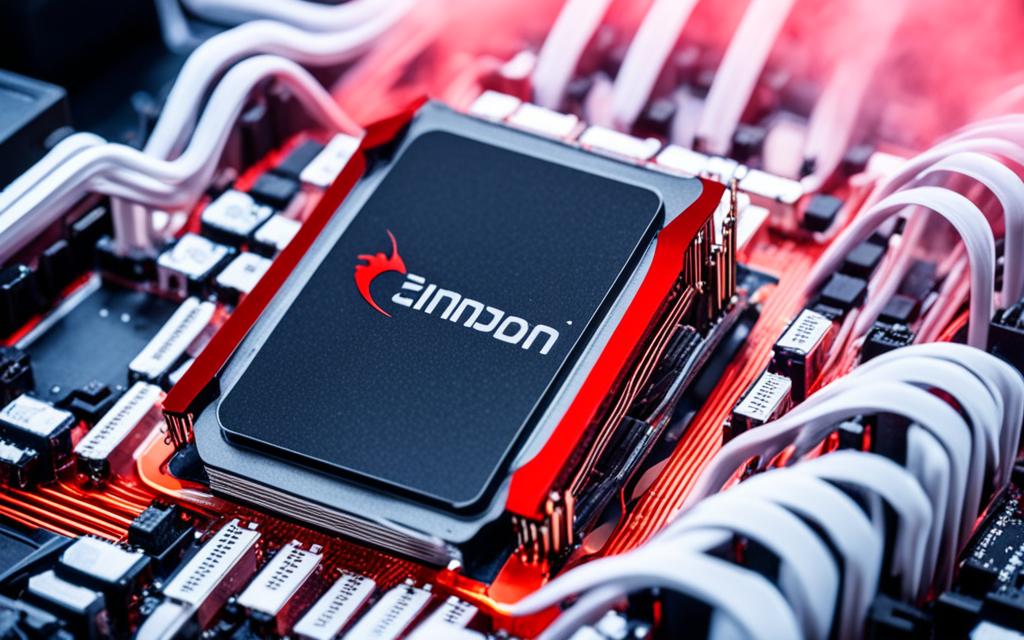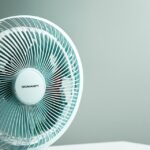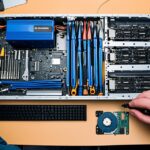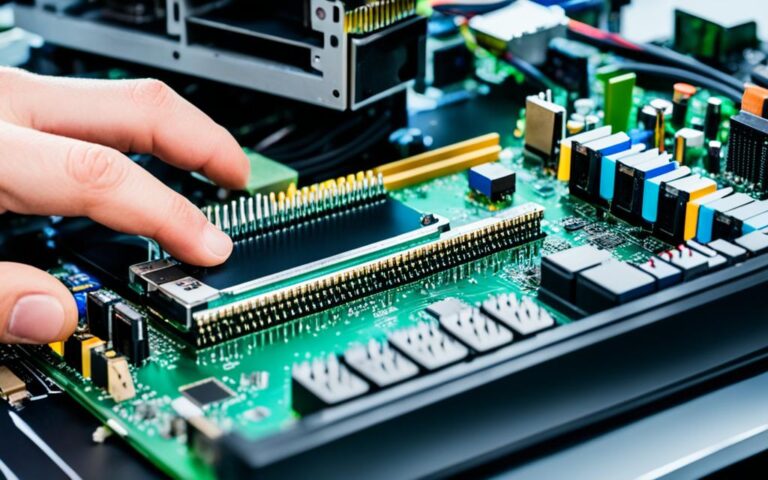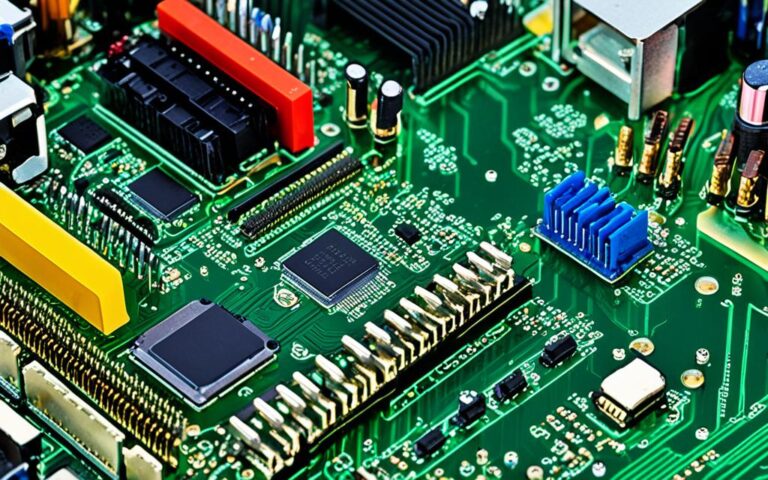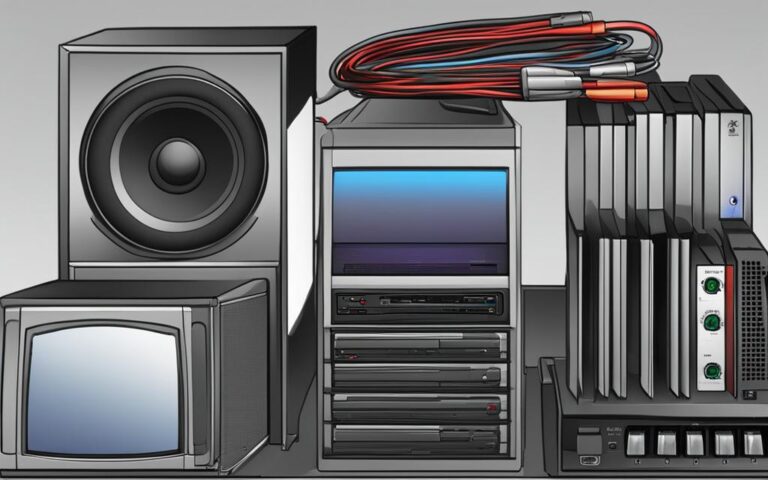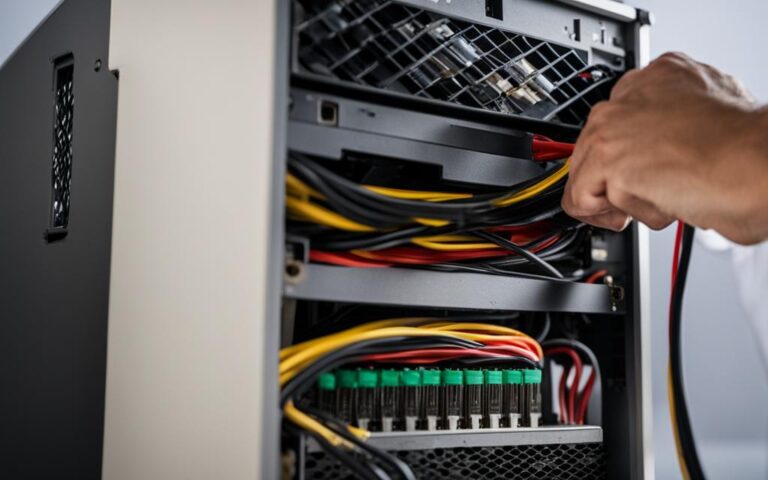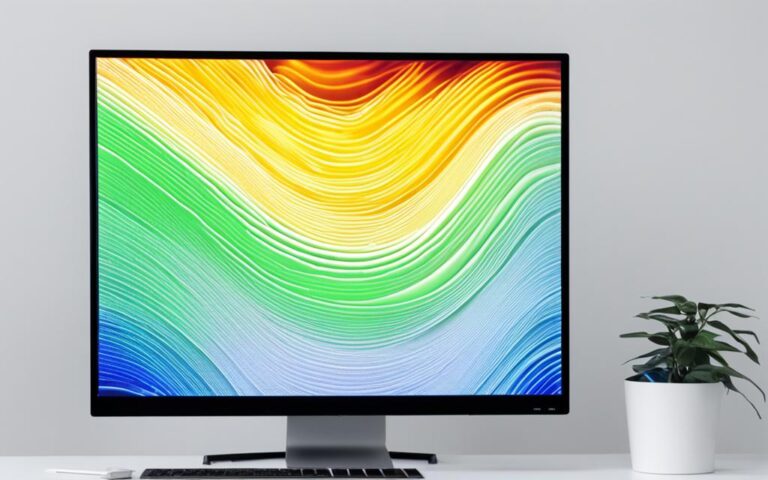Troubleshooting Desktop Processor Overheating
Is your desktop computer experiencing performance issues or unexpected shutdowns? The culprit could be processor overheating. Overheating can degrade the performance and longevity of your desktop, but don’t worry – we’ve got you covered.
In this article, we will guide you through the process of troubleshooting and resolving desktop processor overheating issues. Whether it’s poor ventilation, outdated software, blocked air vents, or dust buildup, we’ll help you identify the problem and find effective solutions to keep your desktop cool and running smoothly.
Stay tuned as we explore the common causes of CPU overheating, the symptoms to watch out for, and the importance of regular maintenance. By the end of this article, you’ll have the knowledge to prevent and address processor overheating, ensuring optimal performance for your desktop computer.
Common Causes of CPU Overheating
In order to prevent CPU overheating, it is important to understand the common causes that contribute to this issue. By identifying the specific cause of overheating, appropriate solutions can be implemented to mitigate the problem and ensure optimal performance of your computer.
Poor Ventilation or Airflow
One of the primary causes of CPU overheating is poor ventilation or airflow within the computer case. When the airflow is restricted, heat generated by the CPU is not effectively dissipated, leading to overheating. This can be due to improper fan placement, blocked air vents, or overcrowded internals.
Faulty or Inadequate Cooling Systems
If the cooling system in your computer is faulty or inadequate, it can result in CPU overheating. This could be caused by a malfunctioning fan, a worn-out heat sink, or an insufficient number of cooling components. A compromised cooling system is unable to dissipate heat effectively, leading to increased temperatures.
Overclocking or Overvolting the CPU
Overclocking or overvolting the CPU, which involves running the processor at a higher frequency or voltage than recommended by the manufacturer, can lead to increased heat generation. This can place additional stress on the CPU and cause it to operate at higher temperatures, increasing the risk of overheating.
High Ambient Temperature or Humidity
Ambient temperature and humidity levels can also contribute to CPU overheating. If the environment in which the computer is located is excessively hot or humid, it can hinder the dissipation of heat from the CPU. This can result in elevated temperatures and potential overheating issues.
Dust Buildup, Blocked Air Vents, and Outdated Software
Dust buildup on the cooling components, such as the fan and heat sink, can impede airflow and heat dissipation, leading to CPU overheating. Similarly, blocked air vents restrict the flow of cool air into the computer case, causing temperatures to rise. Outdated software can also contribute to CPU overheating as it may not utilize system resources efficiently, placing additional strain on the processor.
Identifying the specific cause of CPU overheating is essential in order to implement the appropriate solutions. By addressing these common causes, you can prevent CPU overheating and ensure the optimal performance and longevity of your computer system.
Symptoms of CPU Overheating
CPU overheating can lead to various symptoms that indicate potential issues with your computer’s processor. Recognizing these symptoms is crucial for identifying and addressing CPU overheating promptly. Here are some common indicators:
- Sluggish or unresponsive computer: When your CPU is overheating, you may notice a decrease in your computer’s overall performance. It may become slow, unresponsive to commands, or experience lag when running applications.
- Unexpected shutdowns or restarts: Excessive heat can cause your computer to shut down or restart unexpectedly. If you notice frequent and abrupt shutdowns without any apparent reason, CPU overheating could be the culprit.
- Loud noises or smells: When your CPU is running hot, you may hear unusual or loud noises from your computer, such as the fan spinning at high speeds or a grinding sound. Additionally, you may notice unusual smells, like a burnt odor, indicating potential damage.
These symptoms occur when the CPU reaches its maximum temperature limit or throttles its speed to reduce heat. High fan speeds, component burn or melt, and CPU throttling are all indications of CPU overheating. Monitoring these symptoms can help you detect and address the issue promptly.
Visualizing the Symptoms
To help you better understand the symptoms of CPU overheating, here is a visual representation of the key indicators:
| Symptom | Description |
|---|---|
| Sluggish or unresponsive computer | Decreased performance, slow response, lag when running applications |
| Unexpected shutdowns or restarts | Computer turning off or restarting without warning |
| Loud noises or smells | Unusual or loud fan noises, burnt odor |
By paying attention to these symptoms, you can diagnose and address CPU overheating issues before they cause significant damage to your computer. In the next section, we will discuss how to check the CPU temperature to ensure optimal performance and prevent overheating.
Checking CPU Temperature
Checking the CPU temperature is essential to assess if it is experiencing overheating. By monitoring the temperature readings of your CPU and other components, you can effectively gauge their performance and identify any potential overheating issues. Various software tools like HWMonitor, Core Temp, or SpeedFan can provide real-time temperature data, allowing you to keep a close eye on your CPU’s thermal status.
When checking the CPU temperature, it is important to understand the ideal operating ranges. Under load, such as when running resource-intensive programs or games, the CPU temperature should typically remain below 80°C (176°F). At idle, when the CPU is not under heavy usage, the temperature should be below 60°C (140°F). This range ensures the proper functioning of the CPU and helps prevent overheating-related issues.
| Temperature | Ideal Range |
|---|---|
| Under Load | Below 80°C (176°F) |
| At Idle | Below 60°C (140°F) |
Regularly monitoring the CPU temperature allows you to take prompt action if the readings exceed the recommended range. It helps in identifying any cooling inefficiencies, software issues, or hardware malfunctions that may contribute to overheating. By keeping the CPU temperature within the ideal range, you can ensure optimal performance, prevent system instability, and extend the lifespan of your CPU.
Preventive Measures for CPU Overheating
To prevent CPU overheating and ensure the optimal performance of your computer, it is crucial to implement the following preventive measures:
- Regular cleaning: Dust and debris can accumulate inside your computer, obstructing airflow and causing overheating. Regularly clean the interior of your computer, removing any dust or debris that may have settled on the components and blocking air vents. This will help maintain proper ventilation and prevent overheating.
- Optimize cable management: Improper cable management can restrict airflow within the computer case, leading to overheating. Organize and secure cables, ensuring they do not obstruct the path of airflow. This will facilitate better airflow and cooling, reducing the risk of CPU overheating.
- Upgrade cooling system: If your computer’s cooling system is inadequate or outdated, consider upgrading it to a more efficient one. This can include installing additional case fans, upgrading the CPU cooler, or even opting for liquid cooling solutions. A robust cooling system will help dissipate heat effectively and prevent CPU overheating.
- Avoid overclocking or overvolting: Overclocking or increasing the voltage of the CPU without proper cooling can lead to excessive heat generation and CPU overheating. If you engage in overclocking or overvolting, ensure that your cooling system is capable of handling the increased heat load. Failing to do so can result in severe overheating and potential damage to your CPU.
- Monitor CPU temperature: Regularly check the temperature of your CPU using software tools such as HWMonitor, Core Temp, or SpeedFan. Monitoring CPU temperatures will help you identify any early signs of overheating and take appropriate preventive measures.
- Watch out for resource-hungry applications: Some applications, especially resource-intensive ones like video editing software or games, can put a significant strain on your CPU, leading to overheating. Be mindful of CPU usage when running such applications and consider closing unnecessary processes to alleviate the heat load on your CPU.
- Update software regularly: Outdated software or drivers can cause CPU overheating due to inefficiencies or compatibility issues. Keep your operating system, drivers, and software up to date to ensure optimal performance and prevent overheating related to software conflicts or bugs.
By implementing these preventive measures, you can significantly reduce the risk of CPU overheating and ensure the smooth operation of your computer.
“Preventing CPU overheating requires proactive measures to maintain adequate cooling and ventilation. By regularly cleaning your computer, optimizing cable management, upgrading the cooling system, avoiding overclocking, monitoring CPU temperature, regulating resource-hungry applications, and updating software, you can keep your CPU cool and prolong its lifespan.”
| Preventive Measures | Benefits |
|---|---|
| Regular cleaning | Prevents dust buildup and improves airflow |
| Optimize cable management | Enhances airflow and cooling efficiency |
| Upgrade cooling system | Ensures effective heat dissipation |
| Avoid overclocking or overvolting | Prevents excessive heat generation |
| Monitor CPU temperature | Enables early detection of overheating |
| Watch out for resource-hungry applications | Reduces CPU workload and heat generation |
| Update software regularly | Addresses software inefficiencies and conflicts |
Fixing CPU Overheating Issues
If your CPU is already experiencing overheating issues, there are several steps you can take to address the problem. By troubleshooting the underlying causes, you can effectively fix CPU overheating and prevent further damage to your desktop computer.
Check the CPU Cooler
The CPU cooler plays a vital role in dissipating heat from the processor. Ensure that it is properly installed and secured on the CPU. Loose or improperly attached coolers can hinder heat transfer and lead to overheating. Check if the mounting brackets are tightly fastened and that the cooler is making good contact with the CPU surface.
Ensure Even Spread of Thermal Paste
Thermal paste helps in creating a smooth and efficient heat transfer between the CPU and the cooler. If the thermal paste is inadequately applied or has dried out, it can result in poor heat dissipation. Remove the old thermal paste using isopropyl alcohol and apply a fresh, thin layer of thermal paste evenly on the CPU surface before reattaching the cooler.
Reset BIOS Settings
In some cases, incorrect BIOS settings can contribute to CPU overheating. You can reset the BIOS settings to their default values to eliminate any software-related issues. Alternatively, you can manually adjust the CPU speed or voltage to lower levels to reduce heat generation. Refer to your motherboard’s manual or manufacturer’s website for instructions on resetting or adjusting BIOS settings.
Close or Disable Resource-Intensive Programs and Features
Resource-intensive programs and features, such as heavy gaming applications or multiple background processes, can put a significant load on the CPU and contribute to overheating. Close unnecessary programs and disable features like automatic system updates or real-time antivirus scans when they are not required. This will help reduce the CPU’s workload and alleviate overheating.
Switch to Lower-Performance Modes
If your CPU is consistently overheating, you can switch to lower-performance modes to reduce heat generation. Most operating systems offer power-saving or eco modes that limit the CPU’s speed and voltage to conserve energy. This can help prevent overheating, although it may result in a slight decrease in overall performance. Adjust the power settings in your operating system to enable these lower-performance modes.
By following these troubleshooting steps, you can effectively fix CPU overheating issues and ensure the proper functioning of your desktop computer. Additionally, it is crucial to practice regular maintenance and preventive measures to prevent future overheating problems.
Importance of Regular Maintenance
Regular maintenance is crucial to prevent CPU overheating and ensure the optimal performance and longevity of your desktop computer. By implementing a few essential maintenance practices, you can keep your computer cool and prevent potential issues.
- Dusting the interior: Regularly clean the interior of your computer to remove dust and debris that can block air vents and hinder proper airflow. Use compressed air or a soft brush to gently clean the components and fans.
- Cleaning fans and vents: Dust and dirt can accumulate on the fans and vents, reducing their efficiency in cooling the CPU. Regularly clean them using a soft brush or a cloth to ensure proper airflow.
- Monitoring temperature: Periodically check the CPU temperature to detect any signs of overheating. Use reliable software tools like HWMonitor, Core Temp, or SpeedFan to monitor temperature readings and take appropriate action if necessary.
| Benefits of Regular Maintenance | Actions to Take |
|---|---|
| Prevents CPU overheating | Perform regular cleaning of the computer interior |
| Maintains proper cooling and ventilation | Clean fans and vents periodically |
| Optimizes CPU performance | Monitor temperature and take appropriate action |
Additionally, keeping your software up to date is essential for maintaining a stable and efficient system. Regularly check for updates to the operating system, drivers, and other software installed on your computer. Outdated software can lead to compatibility issues and higher CPU usage, increasing the risk of overheating.
Optimizing cable management inside your computer case can also contribute to preventing CPU overheating. Properly organizing and securing cables can improve airflow and reduce the accumulation of dust and heat around the components.
Regular maintenance practices, such as cleaning the interior, monitoring temperature, and optimizing cable management, are essential for ensuring the longevity and optimal performance of your desktop computer.” – TechExpert, Computer Maintenance Specialist
Lastly, practicing safe computer usage habits can help prevent CPU overheating. Avoid blocking the air vents on your computer by placing it in a well-ventilated area. Ensure that there is adequate space around the computer for proper airflow. Additionally, avoid running resource-intensive tasks or programs for extended periods, as they can generate excess heat.
By regularly performing maintenance tasks and adopting these preventive measures, you can keep your CPU cool, reduce the risk of overheating, and prolong the lifespan of your desktop computer.
Conclusion
Processor overheating is a critical issue that can significantly impact the performance and lifespan of your desktop computer. However, by implementing the troubleshooting tips and preventive measures discussed in this article, you can effectively address CPU overheating issues and ensure the optimal functioning of your system.
Regular maintenance plays a crucial role in preventing CPU overheating. By periodically cleaning the interior of your computer, including fans and vents, you can maintain proper cooling and ventilation. Additionally, monitoring the temperature of your CPU and other components is essential for detecting and addressing any overheating problems promptly.
Remember to optimize cable management to improve airflow, avoid overclocking or overvolting the CPU without proper cooling, and keep your software updated to prevent CPU overheating. By following these solutions and incorporating regular maintenance practices, you can enhance your desktop’s performance, extend its lifespan, and avoid the detrimental effects of processor overheating.
